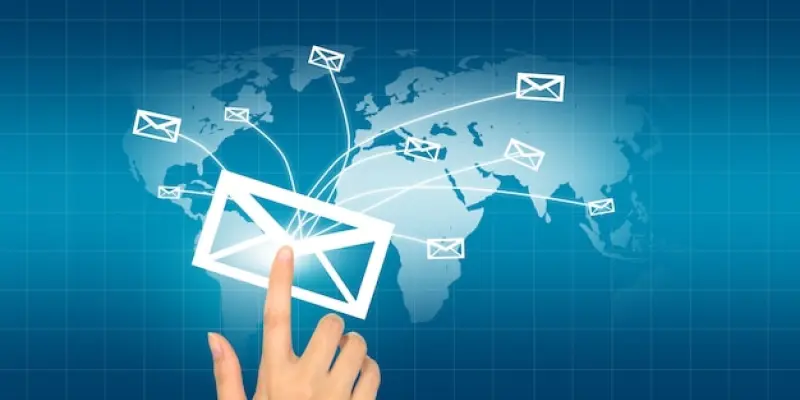Email marketing has long been a cornerstone of digital marketing strategies, but its landscape is undergoing a significant transformation as brands increasingly shift toward a model focused on personalization. Instead of inundating consumers with mass-produced emails, companies are now prioritizing hyper-relevant content that seamlessly fits into consumers’ daily routines. This shift represents a radical move away from traditional marketing boundaries and towards creating personalized experiences that are almost invisible in their integration into everyday life. This article delves into how this evolution is affecting brands, examining predictive techniques and thoughtful personalization methods that aim to meet consumers’ needs proactively, setting the stage for a new era in email marketing.
The Limitations of Traditional Personalization
Basic Tactics and Consumer Expectations
Conventional email personalization, often limited to using a recipient’s first name or basic demographic segmentation, is rapidly becoming obsolete in a world where consumers expect more dynamic and tailored interactions. Especially among younger demographics like Generation Z and millennials, there is a growing demand for more meaningful personalization. For instance, over half of these groups consider personalization to be of paramount importance and are willing to exchange their data to enhance their email experiences. Despite these trends, many companies lag behind, sticking to outdated techniques tethered to traditional Email Service Provider (ESP) systems. This reluctance to evolve not only represents a missed opportunity for brands to engage with visionary consumers but also risks alienating a clientele eager to participate in a more personalized dialogue.
Predictive Personalization and Consumer Engagement
Leading brands are distinguishing themselves by adopting sophisticated, context-aware personalization techniques that prioritize adding value to consumer interactions before any explicit consumer requests are made. From travel companies providing destination-specific recommendations to insurance providers utilizing geolocation data for optimizing customer service, the focus is on predictive interactions. These forward-thinking strategies allow companies to meet consumer demands in real time, nurturing a sense of anticipatory assistance that strengthens the brand-customer bond. Not only does this engender higher levels of consumer engagement, but it also shifts consumer expectations, transforming email marketing from transactional exchanges to value-driven interactions that take place when they are most relevant to the consumer.
Creating Invisible Experiences
Winning in the Customer’s Moment
The strategy of “winning in the customer’s moment” emphasizes the importance of connecting with consumers at key points of interaction, many of which extend beyond mere transactions. These moments represent any situation where a consumer is seeking assistance or looking for an opportunity to fulfill a need, and email can be a frictionless conduit delivering the necessary solutions. To address these moments effectively, brands must first gain deep insights into consumer preferences, deploying tools like live polling, preference centers, and behavioral data analysis. By thoroughly understanding what resonates with their audience, companies can continually refine and optimize their communication strategies. This allows marketers to discern which kinds of content drive the most engagement and adapt their approaches accordingly, thereby constructing interactions that effortlessly align with the consumer’s momentary needs.
Anticipatory Interactions and Brand Value
Brands are also encouraged to create anticipatory interactions that eliminate barriers, thereby making consumer experiences as effortless as possible. Consider, for example, a travel company that, instead of sending a generic pre-trip itinerary, sends a hyper-personalized message containing a comprehensive travel guide tailored to the individual, including flight details, weather updates, and activity suggestions. Such communications require minimal planning from the consumer, effectively showcasing the brand’s understanding and foresight. Similarly, insurance companies can leverage real-time geolocation data to offer seamless service assistance whenever a customer moves to a new city. By including automatically generated directional assistance in their communication, these companies remove the logistical planning burden from the consumer, reinforcing the power of invisible experiences where personalized service solutions meet customer needs precisely at the right moment.
The Role of Advanced Technology
Automation and Real-Time Data Integration
The expanding use of automation in email marketing has moved beyond simple triggered messages and rigid sequencing to integrate dynamic, real-time data sources. This technological evolution enables brands to create email experiences that feel personal and considerate of user needs, minimizing communication clutter while maximizing message relevance. Effective real-time data integration allows companies to adjust their messaging according to factors such as consumer browsing habits, recent purchases, and current location data. Consequently, rather than overwhelming consumers with excess messaging, email marketing efforts can focus on sending intelligently timed content that anticipates consumer inquiries before they’re articulated, leading to a more satisfying and streamlined user experience.
Innovation Driving Engagement
Advanced personalization techniques afford brands opportunities to tailor their messages beyond previously used static methods. Recommendations can now be crafted based on intricate details such as browsing habits or real-time conditions like weather or device type. Furthermore, dynamic updates—ranging from inventory changes to price adjustments or service disruptions—become integral parts of a robust and responsive email strategy. By utilizing state-of-the-art personalization, interactions eschew conventional marketing in favor of reflecting a genuine understanding of consumer needs. This congruence between brand objectives and consumer desires epitomizes the invisible experience narrative, forecast as the hallmark of future email marketing success.
The Road Ahead for Email Marketing
Advanced personalization techniques provide brands with the capability to tailor their messaging in ways that go beyond the static methods of the past. Today, recommendations are crafted from detailed insights, such as an individual’s browsing habits or current conditions like the weather or device being used. Additionally, dynamic updates have become a key part of an effective and adaptive email strategy. These updates can address inventory changes, pricing shifts, or service interruptions, ensuring communications are timely and relevant. By embracing cutting-edge personalization strategies, brands move beyond traditional marketing, demonstrating a real grasp of consumer needs and preferences. This alignment between brand goals and consumer expectations represents the concept of the invisible experience. Such a seamless, personalized experience is predicted to be the defining feature of successful email marketing in the future. As brands continue to leverage these advanced techniques, they will create more meaningful and satisfying interactions with their audience.

